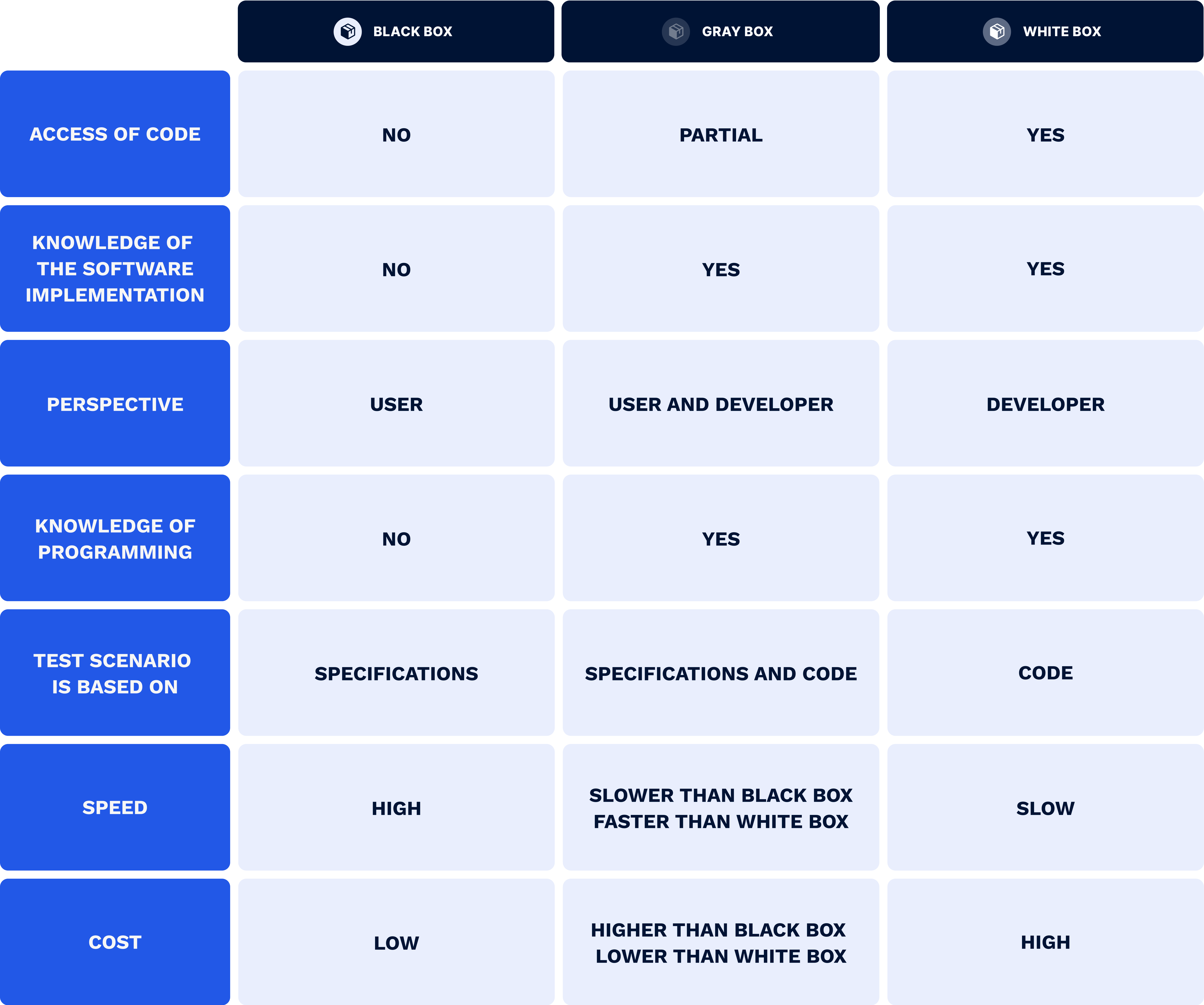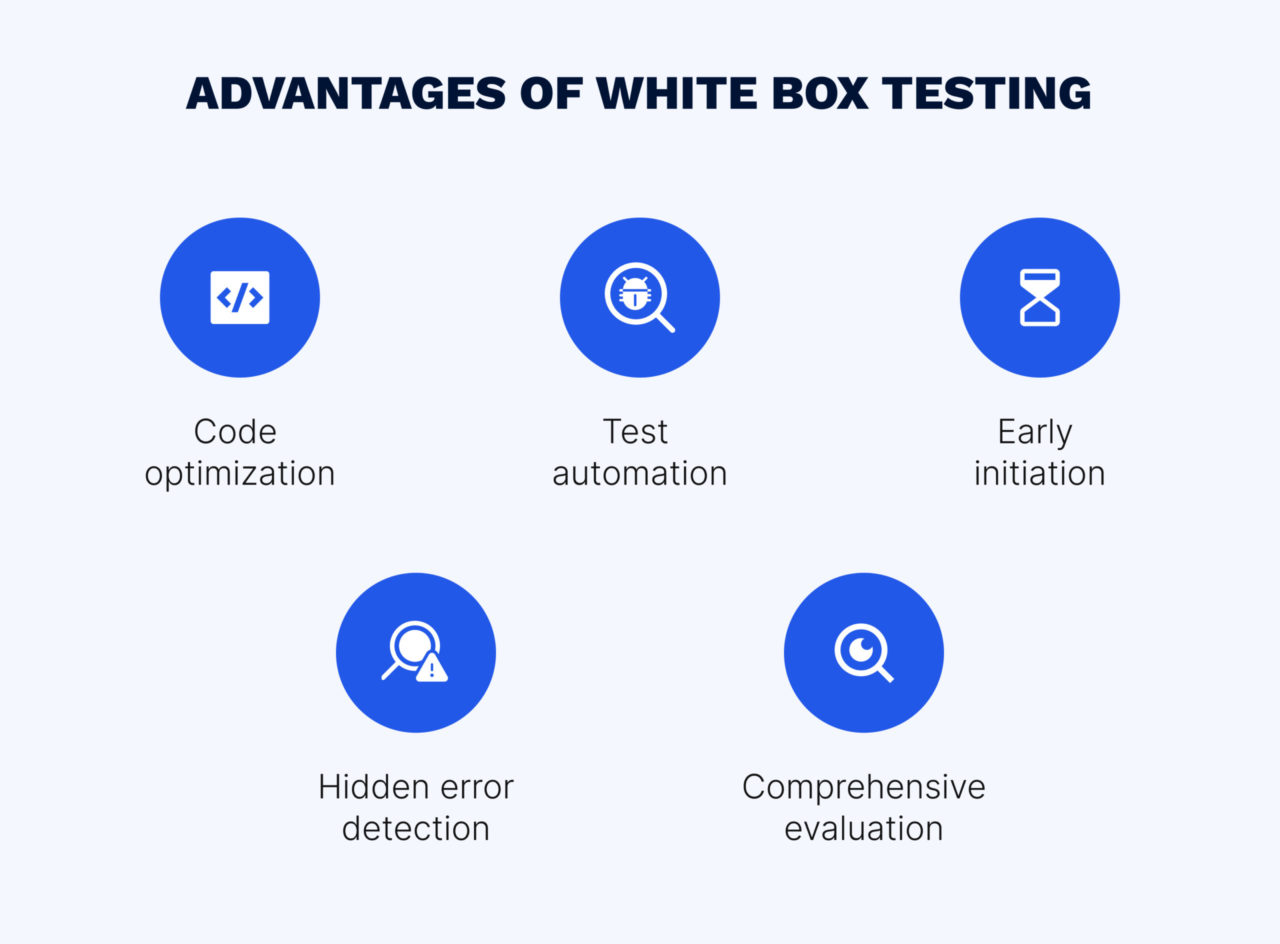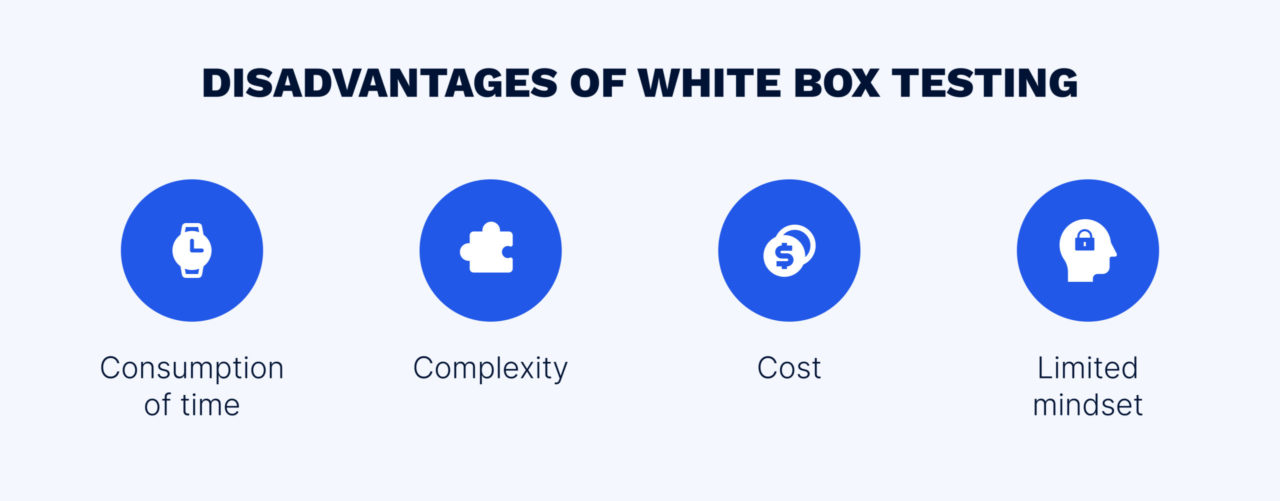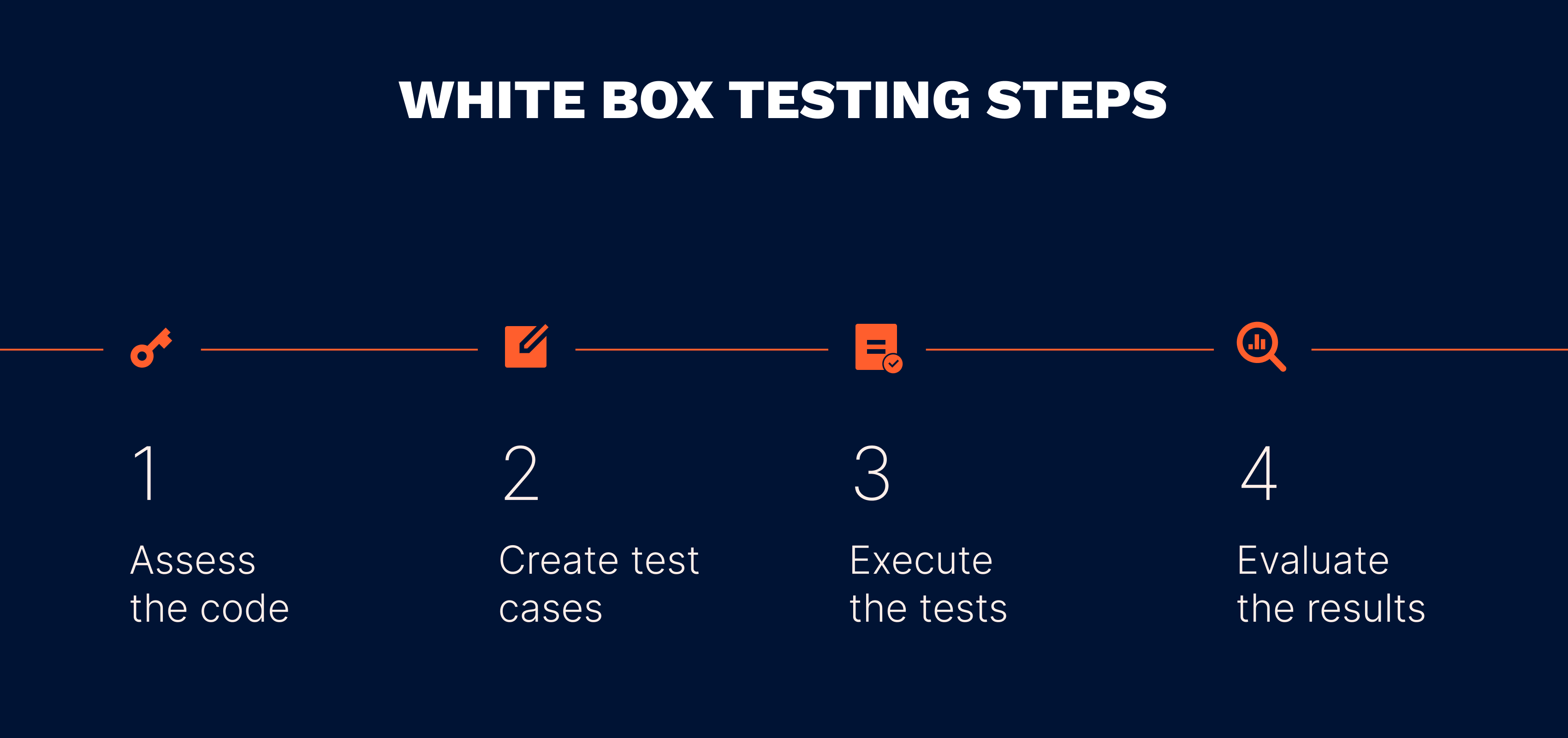
Contact us
Our team would love to hear from you.

An absolutely invulnerable product does not exist. Remembering this axiom, take care of your software’s security before it is too late. To help you find the bugs, there are various techniques, including white box penetration testing (pen testing). What is it, what are its pros and cons, techniques and tools, and how do you perform it? Read on to find the answers.
White box is a type of penetration testing designed to assess the internal software structure, verify input-output flow, and ensure that internal operations are performed in accordance with specification. This method implies that penetration testers have full privileges and comprehensive knowledge about the system or application they hack. The target, architecture, source codes, login credentials, and more are all available to the ethical hackers. Precisely because the tester can see through the entire program, white box testing is often called clear box, glass box, transparent box, or open box. The core purposes of this approach are to:
White box testing is often described in terms of SAST (Static Application Security Testing). Nowadays, this is an integral part of automated build processes in CI/CD development pipeline. To identify defects, there is no need to run software. SAST tools scan the source code or binaries of programs and apps to detect potential vulnerabilities.
Here are some of the other important features of white box testing:
The core difference between white box, gray box, and black box penetration testing lies in the amount of information available to a tester. The white box methodology is described as the most in-depth, but this doesn’t mean that it is the best fit for every project. Each type has its own pros, cons, and use cases. The following table compares the three methods.

White box includes several types of testing designed to evaluate the function of an app, a block of code, or a specific software package. There are three core levels where the white box approach is mainly applicable: unit testing, integration testing, and regression testing.
This type of testing is designed to check each individual component and module to ensure that they work properly before proceeding with creating other features or integrating with other units. This is where developers themselves perform testing with the white box approach to assess the performance of the code. The use of this method during unit testing helps identify most bugs early in the software development lifecycle (SDLC) when they are cheaper and easier to fix.
A unit may work perfectly in isolation, but when combined with other ones, integration problems may arise. In this case, testers perform integration testing to verify how components are connected and how they interact with different parts of the system. To execute this type of testing and ensure a seamless launch, engineers test the source code components as an entity. This helps avoid errors due to different code and logic, improves test coverage, and provides an additional level of reliability.
Code changes can cause defects and malfunctions to appear or recur. To reduce these risks and ensure that the code still works well and passes test cases after functionality or security updates, regression testing is performed. This is a vital step to guarantee overall stability of software.
When system tests are completed, testers examine how the software works in the real-world environment. The purpose of this stage is to ensure that the solution meets the requirement specifications. The black box approach is considered more suitable for this type of testing, but the white box method is also used during acceptance testing. In this phase, QA engineers apply the white box strategy to check whether all work process flows have been covered.
The white box testing model allows software engineers to test more aspects of the source code than the other approaches. While black box testing can show how the system works from the end user’s perspective, white box penetration testing can show how the software internals work to reveal hidden errors in the code and optimize it. Among the other advantages of the white box penetration testing methodology, we can highlight the following:
Following the white box model, engineers can start testing at an early stage of the SDLC. There is no need to wait until the user interface is created.
White box testing cases are easy to automate once they are ready, which can improve coverage with less effort.
With white box penentration testing, experts can conduct more thorough testing, covering a large number of execution paths.

However, since testers have to deal with the code, the white box approach to pen testing requires deep knowledge of programming, which makes this type of penetration testing the most complex, as well as time- and money-consuming. In addition, when performing white box pen testing, engineers focus on the internal structure and disregard the external issues, including missing functionality and lack of usability of the software.

The biggest benefit of white box is that this approach helps ensure that almost every aspect of the software’s internal structure is tested. To achieve full code coverage, testers turn to several techniques. The most common ones are described below.
In software development, a statement is a line of code that instructs the compiler to carry out an action. All programs are composed of a set of such statements. Each line of the code should be executed at least once. This is what the statement coverage method is for. If a portion of the code is unused or unreachable because of programming errors, updates, etc., developers fix the incorrect statements or remove redundant code.
In a computer program, a branch is an instruction that commands a computer to execute different instructions instead of running the statements one-by-one. This can include if-else and other conditional loops, each having two branches: true and false. Therefore, the tester, using the branch coverage method, defines two conditions: one for the true branch and the other for the false branch.
The key purpose of this technique is to check whether each branch is covered by unit tests and executed at least once.
In computing, a path is a way of reaching a certain location in a program. With the path coverage method, the tester checks the whole program on all possible paths, from start to finish. This is a holistic technique that ensures that every execution path is covered at least once. The objective of this approach is to guarantee that all of them are functional, efficient, and necessary.
To successfully carry out white box testing, do the following:
Since white box testing deals with the inner structure of a program, the tester must be well versed with the language used in the app and be aware of secure coding practices since security is the core target of any type of software testing.
In addition, the engineer must have in-depth knowledge of the app’s purpose and features to conduct thorough white box testing.
When the preparation phase is done, design test cases for each possible unit or path to examine all the components of the program.
Once the test cases are in place, it’s time to run them to uncover structural loopholes in the target software.
After successful testing, create the final report of the entire testing process noting all the steps and strategies used and all the outputs received.
The team will then analyze the outcomes, fix the bugs, and decide whether the product is ready to be delivered to the client or not.


White box testing is an exciting and quite challenging task for a security tester. Along with significant advantages, in particular the comprehensiveness, high efficiency, and thoroughness, there are some limitations which cannot be ignored. Testers must know the programming language and the system’s structure like the back of their hand to successfully uncover structural and security loopholes and ensure the app’s correctness at the code level. This certainly has an impact on time and price of the endeavor. Still, the cost of testing is much less than the cost of having bugs discovered after the product delivery and fixing them. A loss of customer loyalty is the highest expense that the lack of a thorough QA check may cause.
Exhaustive testing is impossible, but combining various techniques, like white box, gray box, and black box, is the way to perfection. We are at your disposal to help you in this journey!
Our team would love to hear from you.
Fill out the form, and we’ve got you covered.
What happens next?
San Diego, California
4445 Eastgate Mall, Suite 200
92121, 1-800-288-9659
San Francisco, California
50 California St #1500
94111, 1-800-288-9659
Pittsburgh, Pennsylvania
One Oxford Centre, 500 Grant St Suite 2900
15219, 1-800-288-9659
Durham, North Carolina
RTP Meridian, 2530 Meridian Pkwy Suite 300
27713, 1-800-288-9659
San Jose, Costa Rica
C. 118B, Trejos Montealegre
10203, 1-800-288-9659